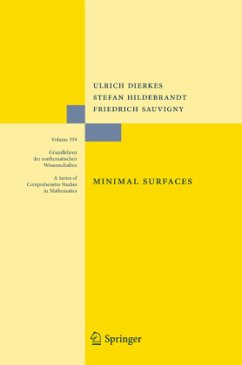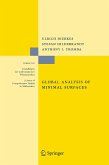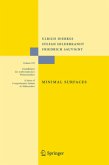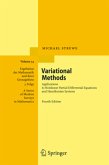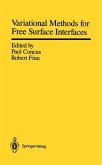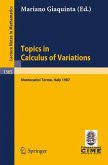Minimal Surfaces is the first volume of a three volume treatise on minimal surfaces (Grundlehren Nr. 339-341). Each volume can be read and studied independently of the others. The central theme is boundary value problems for minimal surfaces.The treatise is a substantially revised and extended version of the monograph Minimal Surfaces I, II (Grundlehren Nr. 295 & 296).The first volume begins with an exposition of basic ideas of the theory of surfaces in three-dimensional Euclidean space, followed by an introduction of minimal surfaces as stationary points of area, or equivalently, as surfaces of zero mean curvature. The final definition of a minimal surface is that of a nonconstant harmonic mapping X: OmegatoR^3 which is conformally parametrized on OmegasubsetR^2 and may have branch points. Thereafter the classical theory of minimal surfaces is surveyed, comprising many examples, a treatment of Björling´s initial value problem, reflection principles, a formula of the second variation of area, the theorems of Bernstein, Heinz, Osserman, and Fujimoto.The second part of this volume begins with a survey of Plateau´s problem and of some of its modifications. One of the main features is a new, completely elementary proof of the fact that area A and Dirichlet integral D have the same infimum in the class C(G) of admissible surfaces spanning a prescribed contour G. This leads to a new, simplified solution of the simultaneous problem of minimizing A and D in C(G), as well as to new proofs of the mapping theorems of Riemann and Korn-Lichtenstein, and to a new solution of the simultaneous Douglas problem for A and D where G consists of several closed components. Then basic facts of stable minimal surfaces are derived; this is done in the context of stable H-surfaces (i.e. of stable surfaces of prescribed mean curvature H), especially of cmc-surfaces (H = const), and leads to curvature estimates for stable, immersed cmc-surfaces and to Nitsche´s uniqueness theorem andTomi´s finiteness result.In addition, a theory of unstable solutions of Plateau´s problems is developed which is based on Courant´s mountain pass lemma. Furthermore, Dirichlet´s problem for nonparametric H-surfaces is solved, using the solution of Plateau´s problem for H-surfaces and the pertinent estimates.
From the reviews of the second edition:
"This volume is in many ways an introduction to differential geometry and to the classical theory of minimal surfaces, and the first four chapters should be readable for graduate students since the only prerequisites are the elements of vector analysis and some basic knowledge of complex analysis. ... In general, the material of this volume is self-contained ... . For further study the authors refer to the extensive bibliography as well as to comments and references in the Scholia attached to each chapter." (Andrew Bucki, Mathematical Reviews, Issue 2012 b)
"The most complete and thorough record of the ongoing efforts to justify Lagrange's optimism. ... contain a wealth of new material in the form of newly written chapters and sections ... . a compilation of results and proofs from a vast subject. Here were true scholars in the best sense of the word at work, creating their literary lifetime achievements. They wrote with love for detail, clarity and history, which makes them a pleasure to read. ... will become instantaneous classics." (Matthias Weber, The Mathematical Association of America, June, 2011)
"This volume is in many ways an introduction to differential geometry and to the classical theory of minimal surfaces, and the first four chapters should be readable for graduate students since the only prerequisites are the elements of vector analysis and some basic knowledge of complex analysis. ... In general, the material of this volume is self-contained ... . For further study the authors refer to the extensive bibliography as well as to comments and references in the Scholia attached to each chapter." (Andrew Bucki, Mathematical Reviews, Issue 2012 b)
"The most complete and thorough record of the ongoing efforts to justify Lagrange's optimism. ... contain a wealth of new material in the form of newly written chapters and sections ... . a compilation of results and proofs from a vast subject. Here were true scholars in the best sense of the word at work, creating their literary lifetime achievements. They wrote with love for detail, clarity and history, which makes them a pleasure to read. ... will become instantaneous classics." (Matthias Weber, The Mathematical Association of America, June, 2011)

